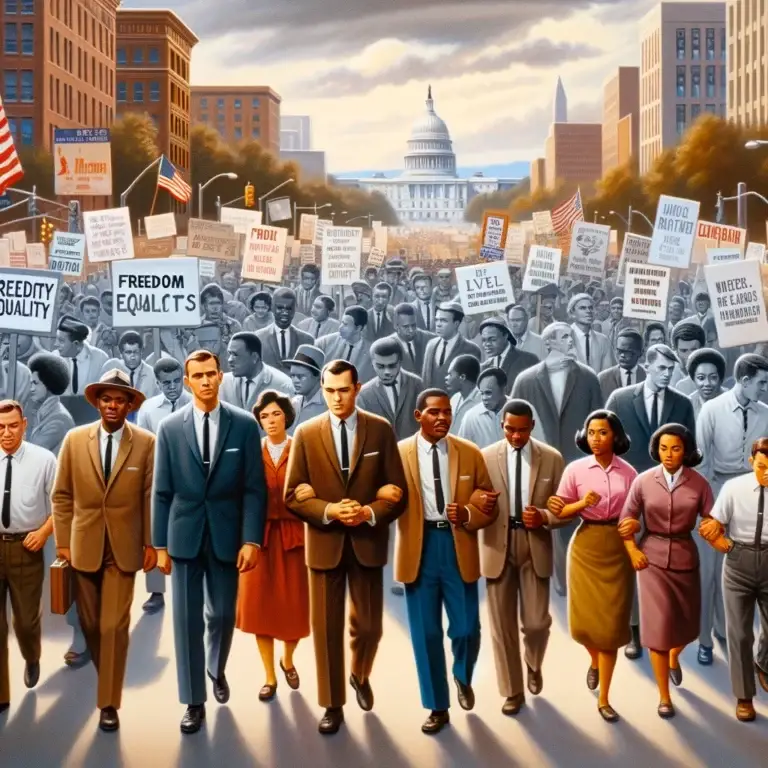Civil Rights Movement

Table of Contents
What was the Civil Rights Movement?
The Civil Rights Movement in the United States refers to a social and political struggle that took place primarily during the 1950s and 1960s, aimed at securing equal rights and protections under the law for African Americans.
The movement sought to eliminate racial segregation, discrimination, and disenfranchisement that were deeply ingrained in American society. It was a transformative period that brought about significant legislative changes and spurred a broader cultural shift towards greater equality.
Civil Rights Movement Events
The Civil Rights Movement in the United States aimed to end racial segregation and discrimination against African Americans, particularly in the Southern states. Still, it also addressed broader issues of equality.
Rosa Parks, a seamstress and civil rights activist, played a pivotal role in the movement when she refused to give up her seat to a white man on a Montgomery bus in 1955, sparking the Montgomery Bus Boycott.
The Southern Christian Leadership Conference (SCLC), founded by Martin Luther King Jr. in 1957, was a key organization in the Civil Rights Movement, advocating for nonviolent protest and civil disobedience.
The landmark Supreme Court case Brown v. Board of Education in 1954 declared state laws establishing separate public schools for black and white students to be unconstitutional, overturning the “separate but equal” doctrine.
The Civil Rights Act of 1964 was a comprehensive piece of legislation that outlawed discrimination based on race, color, religion, sex, or national origin and ended segregation in public places.
The Voting Rights Act of 1965 aimed to overcome barriers at the state and local levels preventing African Americans from exercising their right to vote, particularly in the South.
The March on Washington for Jobs and Freedom in 1963 was a significant event where Martin Luther King Jr. delivered his iconic “I Have a Dream” speech, advocating for racial harmony and equality.
Freedom Summer in 1964 was a campaign to register African American voters in Mississippi, which faced significant violence and resistance from white supremacists.
A prominent civil rights leader, Malcolm X, advocated for black empowerment through self-defense and rejected nonviolence as the sole strategy, offering an alternative perspective to the movement.
The assassination of Martin Luther King Jr. in 1968 sparked nationwide mourning and had a profound impact on the Civil Rights Movement, leading to renewed efforts to address economic inequality and systemic racism.
Related Links
Apartheid
Suffrage Movement
Stonewall Riots
Underground Railroad